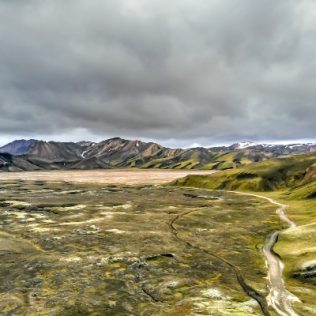When deciding to visit Iceland you will find a stunning Nordic island categorised by raw, rugged landscapes and dramatic, natural beauty. Whether you’re seeking mighty mountains to climb, icy glaciers to explore, blue lagoons to marvel or somewhere full of endless outdoor space, this is the place for you.
Due to Iceland’s plentiful open space and rural terrain, many people come here to enjoy a road trip around the island. Tourists generally travel the ring road, a route that goes around the whole of Iceland, taking you to all the best sights in the country.
If you’re already familiar with Iceland’s roads, you will know that during times they can become difficult to travel, especially during the winter months. This guide will take you through how to drive the F roads in Iceland – some of the country’s trickier paths to follow. After reading through our recommendations below, you will be able to visit this spectacular country with all the information you need to travel safely.
What are the F-Roads in Iceland?
The F roads in Iceland are unpaved, gravel tracks that are only open during the summer months. As they don’t offer the same infrastructure that the other main roads in Iceland have, when the harsher weather of winter arrives, the F-roads can become unsafe.
F-roads typically run through the Icelandic highlands, surrounded by incredible mountains and impressive scenery. You can spot these roads as they are marked with an ‘F’ in front of the number on the road maps. It is important to be aware of this as if you are planning to road trip around Iceland in winter, it is best to avoid the F-roads during this time.
Some of the F-roads are better than others, offering higher quality gravel paths, making these easier to navigate through. Others provide a more hair-raising experience with crossings over rivers, loose, rocky terrain and sandy routes along the way.
Another thing to note is that Iceland’s F-roads can only be driven with a 4×4 vehicle. Four-wheel drives are needed to access trickier parts of the roads, such as crossing rivers and heading off the beaten path. Without a 4×4 you can easily find yourself stuck, and with these roads being so rural, it can be difficult to get anyone out to help.
You’re probably wondering why so many choose to travel Iceland’s F-roads when they come with so many obstacles. The answer to that is because of where they lead. Surrounded by pure nature, raw, rugged scenery and endless towering peaks, these roads provide some of the most thrilling adventures.
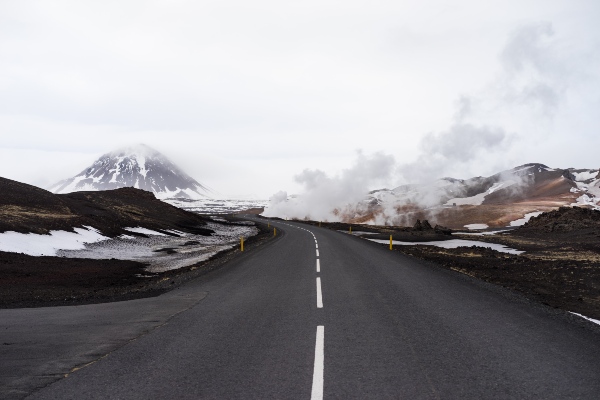
What Cars are Allowed on the F-Roads?
The rugged nature of Iceland’s F-roads means that you will need a suitable 4×4 car to drive on them. A 4×4 vehicle allows you to navigate through trickier terrain and provides a much better grip for when the roads are icy or snow-dusted. Attempting to drive the F-roads in a normal 2-wheel-drive car would result in being stuck or having an accident, as they aren’t built for the rocky paths and colder times of the year.
Not only is it unsafe to drive Iceland’s F-roads in a standard 2-wheel-drive, but it’s also illegal. If an accident occurs whilst driving in a 2WD along any of the country’s F-roads, your insurance will instantly become void. It is always best to look into the different types of vehicles allowed on the island’s roads, as this ensures you keep yourself and others safe during your trip.
However, when driving along Kjalvegur road 35, this road doesn’t become an F-road until after Gulfoss, making this a safe route to drive to and from Gullfoss in a standard 2-wheel-drive.
In addition to Iceland’s F-roads, 3 other roads aren’t classified with an F. These are mountain routes through Kjolur (road 35), Kaldidalur (road 550) and Jokulhalsleid (road 570). When driving on any of these you will also need a 4-wheel-drive vehicle.
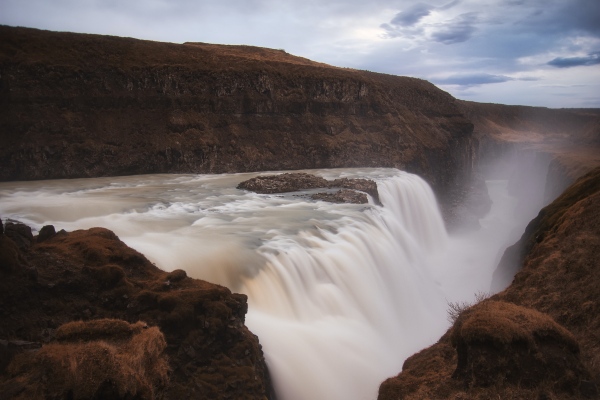
Opening and Closing Dates for Iceland’s F-Roads
It probably seems like a strange concept that some of the roads in Iceland open and close throughout the year. However, this is necessary due to the tricky nature of the roads in the icy winter conditions.
The F-roads are only open to exploring during summer, so the opening and closing times can vary depending on the weather and the road terrain. If the weather is particularly bad that year or the ground appears unsafe, they will reopen later until they’re deemed safe to drive on.
However, as a rough guide, you can expect most of Iceland’s F-roads to be open in mid-June, with some opening at the start of June and others remaining closed until early July.
As the summer period comes to an end around mid to late September, the F-roads in Iceland will start to close again for winter. The amount of snow covering the road, the level of water and many other factors all play a part in Iceland’s opening and closing times for their F-roads. Some routes that pass through conservation areas often remain closed to a certain extent, to limit the amount of pressure and traffic travelling along them.
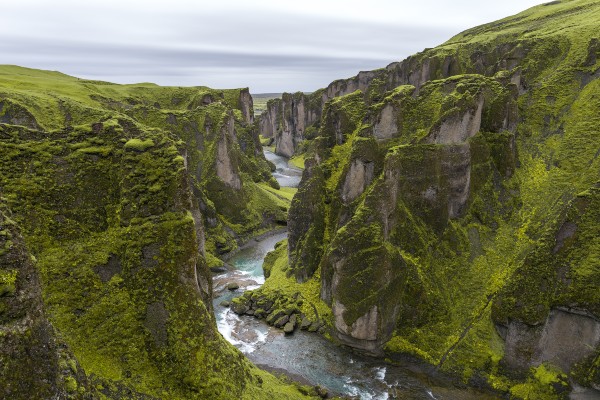
Conditions on the F-Roads to be Aware Of
When deciding to do a self-driving tour of Iceland, there are some things that you should be aware of to travel safely. Driving in Iceland in winter in particular can present many risks and these are worsened when on the F-roads.
There are several different F-roads in Iceland, all of which present their challenges. The potential for adventure here is unmatched, as you travel along some of the most remote paths that will take you to a part of the country that appears as no one has ever been before. With craggy volcanoes, towering mountains, vast glaciers, cascading waterfalls and shimmering lagoons, the thrilling drive is more than worth it if you feel confident enough to attempt it.
Whilst an Iceland driving holiday provides an experience like no other, you must have all the relevant information to keep yourself and others safe. You need to assess what roads you are comfortable with and others to avoid.
There are easier F-roads around the country that provide smoother gravel tracks and don’t require river crossings. As long as you’re in a 4WD, even inexperienced Icelandic drivers should have no issue with driving along these. Some areas are rougher than others, with bumps and uneven ground along the way, but overall they’re easier to navigate.
For those who want to turn it up a notch, but remain a little more in their comfort zone, there are also medium difficulty F-roads. Along these routes, you will find rocky sections, shallow sand and some river crossings. If you want to attempt these roads, it is best to get a feel for Iceland’s F-roads by trying some of the easier routes first.
The more difficult F-roads require drivers with more experience. There are fast-flowing, deeper rivers to cross and steep roads with boulders along the paths. These routes are not suitable for even small or medium 4×4 vehicles and require transport that has been passed off to drive on these paths. If you attempt to drive the harder F-roads in an unsuitable car, or without the proper experience, you may find yourself stuck or causing an accident, so it’s always best to do your research beforehand.
What Vehicle Should You Hire for Driving on the F-Roads?
If you’re wondering if it is easy to drive in Iceland, the answer depends on many factors. It can be as easy or as difficult as you choose it to be. Things like knowing the roads and what you feel comfortable driving on and the vehicle you’re going to drive in are factors to consider.
You will need a well-equipped 4×4 vehicle to drive through the highlands in Iceland. This will allow you to travel along the F-roads both legally and safely. Although, it’s important to remember not to attempt any parts of the road that appear dangerous, even if they are open, as the weather conditions can change and create further risks. There are two types of 4WD vehicles to choose from. You can select either Jeeps for 5 passengers or a Mercedes Vito for larger groups of up to 9 people.
Another thing to note is that no matter what vehicle you are in, going off-road in Iceland is prohibited. Due to its stunning natural beauty, off-roading can cause damage to the environment and can result in either a large fine or prison time. It’s best to enjoy all that the beautiful country has to offer from the roads provided.

How to Cross Rivers in Iceland
River crossings can be a large part of driving on the F-roads in Iceland. Whilst they provide great fun and thrilling adventures, it’s important to know how to tackle these safely.
Several rivers block the paths on Iceland’s F-roads and they usually consist of debris and sand. Crossing rivers can present hazards if not done properly. So, you must take the necessary steps to ensure that you’re keeping yourself safe and protecting the environment whilst travelling through Iceland’s highlands.
Here are some tips for crossing Iceland’s rivers:
- Make sure you engage your 4-wheel-drive when crossing glacial rivers
- Choose your day wisely – things like weather can have an adverse effect on rivers and how safely you cross them. The rivers are faster and higher on rainy days, but they are also like this on hotter, summer days when glaciers melt creating a stronger flow
- Drive as slow as possible; it’s always better to go with caution. If you try to rush through the river you stand a higher chance of getting stuck
- Make sure you assess the height of the water before crossing. If the water is higher than three-quarters of the height of your wheels, it is not safe to cross
- If the water appears calm, this is usually where it is the deepest. Make sure you avoid these areas, and always check how the river is flowing before attempting to cross
- Usually, the wider the river the more likely it is to cause a hazard. As you wade through wide rivers, it creates a wave in front of your vehicle that could cause you to become stuck. It’s best to go extremely slow when crossing wide rivers in Iceland
- Always cross the rivers in Iceland with caution. If you’re unsure of the situation, don’t attempt it. It’s often best to travel with an experienced guide who knows the roads
Although we have mentioned a few of the risks when travelling Iceland’s F-roads, the outcome is more than worth it. Not only do you find yourself on an outdoor adventure like no other, but no matter where you look volcanoes, glaciers, mountains and greenery surrounds you. Providing you take all the cautionary steps, you shouldn’t find yourself in danger when crossing the rivers on Iceland’s F-roads.
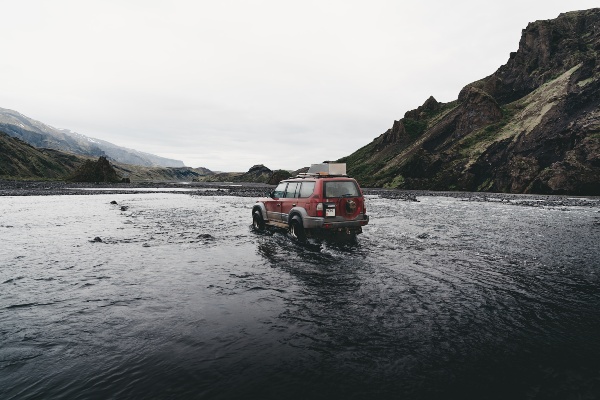
Summary
We hope that after reading this article you can now plan a road trip to Iceland with everything you need to know. This is a country full of adventure and exploration, with the outdoors appearing endless.
There is no better way to see all that Iceland’s stunning terrain has to offer than taking a trip through its remote highlands and rural F-roads. Wherever you choose to go, you will find an island full of stunning scenery and breathtaking natural vistas.
If you’re planning a trip to Iceland to make the most of its glacial offering, you’re likely in need of transport. Take a look at our fantastic range of vehicles available to rent for all kinds of holidays in Iceland.
